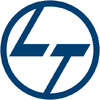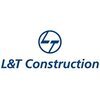Filter interviews by
Ahluwalia Contracts India Safety Supervisor Interview Questions and Answers
Ahluwalia Contracts India Safety Supervisor Interview Experiences
1 interview found

(2 Questions)
- Q1. Good interview about our technical skills
- Q2. Prepare well in technical
Interview Preparation Tips
Top trending discussions






Interview questions from similar companies

Interview Questionnaire
1 Question
- Q1. What is the documentation work for EHS department.
- Ans.
Documentation work for EHS department includes creating and maintaining safety policies, procedures, incident reports, training records, and regulatory compliance documents.
Creating safety policies and procedures
Maintaining incident reports
Managing training records
Ensuring regulatory compliance
Updating safety manuals and guidelines
Conducting risk assessments and documenting findings
Maintaining safety data sheets (SDS)
P

I applied via Referral and was interviewed in Feb 2022. There were 4 interview rounds.

(1 Question)
- Q1. Wagon tippler overall process flow, WT hazards, TPI, Basic daily documents requirement.
(1 Question)
- Q1. Hazards of confined space, Percentage of O2 in confined space for safe working, Conveyor Hazards, Work permit system, CAPA, JHA, Welding and gas cutting hazards, Safety devices in conveyor.
- Ans.
The interview question covers various safety hazards and procedures related to confined spaces, conveyor systems, welding, and gas cutting.
Confined space hazards include lack of oxygen, toxic gases, and physical hazards
Safe working percentage of O2 in confined space is 19.5% or higher
Conveyor hazards include pinch points, entanglement, and falling objects
Work permit system is used to ensure that all necessary safety me...
(3 Questions)
- Q1. What are your salary expectations?
- Q2. What is your family background?
- Q3. Share details of your previous job.
Interview Preparation Tips

I applied via Referral and was interviewed in Feb 2022. There were 4 interview rounds.

(1 Question)
- Q1. Wagon tippler overall process flow, WT hazards, TPI, Basic daily documents requirement.
(1 Question)
- Q1. Hazards of confined space, Percentage of O2 in confined space for safe working, Conveyor Hazards, Work permit system, CAPA, JHA, Welding and gas cutting hazards, Safety devices in conveyor.
- Ans.
The interview question covers various safety hazards and procedures related to confined spaces, conveyor systems, welding, and gas cutting.
Confined spaces pose various hazards such as lack of oxygen, toxic gases, and physical entrapment.
The safe working percentage of oxygen in a confined space is typically between 19.5% and 23.5%.
Conveyor hazards include entanglement, pinch points, and falling objects.
A work permit sys...
(3 Questions)
- Q1. What are your salary expectations?
- Q2. What is your family background?
- Q3. Share details of your previous job.
Interview Preparation Tips

I appeared for an interview before Feb 2024.
(3 Questions)
- Q1. What is safety meeting
- Ans.
A safety meeting is a gathering where employees discuss and address safety concerns and protocols in the workplace.
Safety meetings are typically held regularly to ensure that all employees are informed and updated on safety procedures.
Topics discussed in safety meetings may include emergency procedures, hazard identification, and accident prevention.
Safety meetings may involve interactive activities, presentations, and...
- Q2. What is excavation
- Ans.
Excavation is the process of digging or removing earth to create a hole or trench for construction or other purposes.
Excavation is commonly done using heavy machinery like excavators, backhoes, or bulldozers.
It is important to properly shore or slope the sides of an excavation to prevent collapses or cave-ins.
Excavation work may uncover underground utilities or archaeological artifacts that need to be carefully managed...
- Q3. What the evaluation

I applied via Company Website and was interviewed in May 2024. There were 2 interview rounds.
My name is jawed alam ummedpura Naya gaon tunnel project i live in kota. Rajsthan
(5 Questions)
- Q1. How many types of fire extinguisher how many types of sign board what is safety management How many types of lifting what is permit how many types of permit. How many types of scaffolding what is safe...
- Ans.
There are multiple types of fire extinguishers, sign boards, lifting equipment, permits, scaffolding, barricading, safety management, and safety cones in safety supervision.
Types of fire extinguishers include water, foam, CO2, dry powder, and wet chemical.
Types of sign boards include prohibition signs, warning signs, mandatory signs, and emergency signs.
Safety management involves identifying, assessing, and controlling...
- Q2. How many types of Accidents
- Ans.
There are mainly three types of accidents: preventable accidents, non-preventable accidents, and near misses.
Preventable accidents are those that could have been avoided if proper safety measures were in place.
Non-preventable accidents are those that occur due to unforeseen circumstances or factors beyond control.
Near misses are incidents where an accident almost happened but was narrowly avoided.
Examples: Slip and fal...
- Q3. What is Safety management
- Ans.
Safety management involves implementing policies, procedures, and practices to ensure a safe work environment.
Safety management includes identifying and assessing risks in the workplace.
It involves developing and implementing safety policies and procedures.
Safety management also includes training employees on safety protocols.
Regular inspections and audits are conducted to ensure compliance with safety regulations.
Inci...
- Q4. How many types of scaffolding
- Ans.
There are several types of scaffolding used in construction, each with its own unique features and purposes.
Supported scaffolding - includes frame, tube and coupler, and mobile scaffolding
Suspended scaffolding - hangs from the roof or a tall structure
Rolling scaffolding - has wheels for easy movement
Cantilever scaffolding - supported by a series of needles and projecting beams
Trestle scaffolding - small, portable scaff
- Q5. How many types of permit
- Ans.
There are various types of permits required for different safety-related activities.
There are different types of permits such as hot work permit, confined space entry permit, excavation permit, etc.
Each permit is specific to the type of work being conducted and the associated hazards.
Permits are used to ensure that proper safety measures are in place before work begins.
Permit systems help in controlling and monitoring
Interview Preparation Tips
- Safety Management

I applied via Job Fair and was interviewed before Sep 2023. There was 1 interview round.
(5 Questions)
- Q1. Before company experience. And lifting procedure
- Ans.
Before gaining company experience, it is important to have a clear understanding of proper lifting procedures to prevent injuries.
Before starting any lifting task, assess the object's weight and size to determine the best approach.
Use proper lifting techniques such as bending at the knees, keeping the back straight, and using the legs to lift.
Avoid twisting while lifting and always ask for help if the object is too hea...
- Q2. Why is important of safety
- Ans.
Safety is important to prevent accidents, injuries, and illnesses in the workplace.
Ensures the well-being of employees
Reduces the risk of accidents and injuries
Increases productivity and efficiency
Compliance with regulations and standards
Enhances company reputation and employee morale
- Q3. What is hazard and typ of hazard
- Ans.
A hazard is a potential source of harm or adverse health effect on a person or persons. Types of hazards include physical, chemical, biological, ergonomic, and psychosocial.
Hazard is a potential source of harm or adverse health effect
Types of hazards include physical, chemical, biological, ergonomic, and psychosocial
Physical hazards can include noise, vibration, radiation, and temperature extremes
Chemical hazards can i...
- Q4. What is your responsibility.
- Ans.
As a Safety Supervisor, my responsibility is to ensure a safe work environment by implementing and enforcing safety policies and procedures.
Implement and enforce safety policies and procedures
Conduct regular safety inspections and audits
Provide safety training to employees
Investigate accidents and incidents to determine root causes
Maintain safety records and documentation
- Q5. Why is join my company
Interview Preparation Tips

I applied via Walk-in and was interviewed in Jan 2022. There was 1 interview round.
(1 Question)
- Q1. What are Diversion plane
- Ans.
Diversion planes are backup landing locations for aircraft in case of emergencies or when the original destination is unavailable.
Diversion planes are predetermined alternate airports that are selected based on factors like proximity, runway length, and availability of services.
They are used when an aircraft cannot land at its intended destination due to weather conditions, runway closures, or other unforeseen circumst...
Interview Preparation Tips
What is fire & fire extinguishers
Carne safety device
How to inspection of scaffolding
What are you inspection in Crane
What are process of Risk Assessment

Safety Supervisor Interview Questions & Answers
Nagarjuna Construction Companyposted on 11 Nov 2022
I applied via Company Website and was interviewed in Oct 2022. There were 2 interview rounds.

(2 Questions)
- Q1. About Health safety in construction and environment
- Q2. Ask any question about safety
Interview Preparation Tips


(3 Questions)
- Q1. Safety indection labour and work
- Ans. Erection safety Safety Indection Safety bell check Flow star roope check Flow star clam check Rectoguard slight check Pully check P.P.Roop check Steel roop check Drirec poll check Labor should be aware of the safety
- Q2. Safety indection labuor and work
- Q3. Educate labor first on safety issues Educate workers on safety issues TPT Check fastid box TMP and metrial check
Interview Preparation Tips
Ahluwalia Contracts India Interview FAQs
Tell us how to improve this page.
Ahluwalia Contracts India Interviews By Designations
- Ahluwalia Contracts India Billing Engineer Interview Questions
- Ahluwalia Contracts India Senior Safety Officer Interview Questions
- Ahluwalia Contracts India Billing Manager Interview Questions
- Ahluwalia Contracts India Assistant Project Manager Interview Questions
- Ahluwalia Contracts India Senior Engineer Interview Questions
- Ahluwalia Contracts India Assistant Manager Safety Interview Questions
- Ahluwalia Contracts India Site Engineer Interview Questions
- Ahluwalia Contracts India Senior Planning Engineer Interview Questions
- Show more
Interview Questions for Popular Designations
- Safety Officer Interview Questions
- Assistant Safety Officer Interview Questions
- Safety Executive Interview Questions
- Assistant Manager Safety Interview Questions
- Safety Steward Interview Questions
- Junior Safety Officer Interview Questions
- Safety Engineer Interview Questions
- Safety Manager Interview Questions
- Show more
Ahluwalia Contracts India Safety Supervisor Interview Process
based on 1 interview
Interview experience
Safety Supervisor Interview Questions from Similar Companies
Ahluwalia Contracts India Safety Supervisor Reviews and Ratings
based on 9 reviews
Rating in categories
|
Senior Engineer
117
salaries
| ₹3.5 L/yr - ₹10.3 L/yr |
|
Civil Engineer
113
salaries
| ₹2 L/yr - ₹7.2 L/yr |
|
Civil Site Engineer
100
salaries
| ₹1.8 L/yr - ₹6 L/yr |
|
Site Engineer
90
salaries
| ₹2.4 L/yr - ₹6.2 L/yr |
|
Engineer
69
salaries
| ₹2.2 L/yr - ₹5.1 L/yr |

Larsen & Toubro Limited

L&T Construction

Kalpataru Projects International

Nagarjuna Construction Company
- Home >
- Interviews >
- Ahluwalia Contracts India Interview Questions >
- Ahluwalia Contracts India Safety Supervisor Interview Questions











